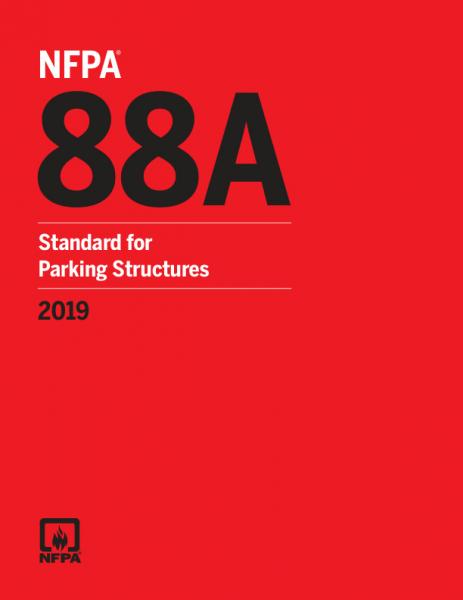BSlStandardsPublication
Fire detection and fire alarm systems for buildings -
Part 1:Code ofpractice for design installation missioning and maintenanceofsystemsinnon-domesticpremises
Adjustment:Ali Mohammad Akhavan
Publishing and copyright information
The BSI copyright notice displayed in this document indicates when the documentwas last issued.
Published by BSI Standards Limited 2013 @ The British Standards Institution 2013
ISBN 978 0 580 78332 6
ICS 13.220.20; 13.320
The following BSI references relate to the work on this standard: COMCommittee reference FSH/12Draft for ment 12/ DC
Publication history
First published as CP 327.404/492.501 September First revision as CP 1019 May 1972Second revision as BS 5839-1 January 1980Fourth revision October 2002 Third revision May 1998Fifth revision March 2013
Contents
Foreword iv
Section 1:General 1 Scope2 Normative references Terms and definitions 23 4 Need for a fire detection and fire alarm system and type of system 85 6 Categories of system Exchange of information and definition of responsibilities 11 147 Variations from the remendations of this standard 15Section 2:Design considerations 188 9 Actuation of otherfire protection systems or safety facilities 21 1810 11 System ponents Systems in explosive gas or dust atmospheres 2212 Monitoring integrity and reliability of circuits control13 equipment Detection zones 23 2914 Alarm zones 3115 16 Audible alarm signals Communication with the fire and rescue service 3617 18 Visual alarm signals Fire alarm wanings for peo 40 ple with impaired hearing 4119 Staged fire alarms 4420 21 Manual call points Types of fire detector and their se 47 ction 4922 Spacing and siting ofautomatic fire detectors Control and indieating e 5623 24 Networked systems equipment 7125 26 Power supplies Cables wiring and her interconnections 8027 Racio-linked systems 8628 29 Electroimagnetic patibility ctrical safety 90 88Section3:Limitationof false alarms 9430 Responsibility forlimitation of false alarms Categories of false alarms 96 9432 Acceptable rate of false alarms 9634 33 Design process for limitation of false alarms Causes of false alarms 98 9935 Measures to limit false alarms 100Section 4:Installation 36 Responsibility of installer 108 10837 Installation practices and workmanship 110Section 5:Commissioning and handover 38 Inspection and testing of wiring 11139 Commissioning 112 11240 41 Documentation Certification 116 11442 Acceptance 11743 Verification 118
10
Section 6:Maintenance 120
44 Routine testing 12045 46 Inspection and servicing Non-routine attention 126 121
Section 7: User’s responsibilities 131
47 48 Premises management Logbook 132 131
Annexes
Annex A (informative) Choice of appropriate category of fire detection and firealarm system Annex B (informative) Typical noise levels in buildings 134 136Annex C (normative) Control and transmission equipment for tactile alarm devices provided for people with impaired hearing systems 138139Annex E (informative) Schematic for design against false alarms Annex F (informative) Visual alarm device illumination characteristics 141Annex G (informative) Model format for system logbookAnnex H (informative) Model certificates 161
List of figures
Figure 2 - Examples of search distances in an open area Figure 1- Sounder circuitsFigure 3 Alarm zones 33 31Figure 5 - Manual call poin Figure 4 Sound pressure levels oints on escape routes 68 49Figure 6-Smoke detectors inpitchedroofs 61Figure 8-Proximi Figure 7-Detectors intop ctors to ceiling fitings of a void 62 62Figure 9-Partition Ceilings geonracks 63Figure Figure 10 Detector on perforated ceiling 65Clear space around a detector Siting optical beam detectors 68 65FIC igure 14 Exarmple networked fire alarm systems 85igure 16 Appropriate marking for the transformer the power supply housing or xamples of functional earth 91the internal power sub-assembly enclosure to denote the use of a safety isolatingFigure E.1 - Schematic for design against false alarms transtormer92 140Figure F.1 Example ofilumination pattern from a ceiling-mounted VAD Example of illumination pattern from a wall-mounted VAD 143 142 Figure F.2
List of tables
Table 1 Spacing and siting of detectors on honeyb and similar ceilings sso o seg jennjs peeds fjaso ym suo uo soaap po bugs pue buoeds 66 Table 2 - 66Table 3 Limits of ceiling height Table 4 Considerations when using and selecting point and optical beam smokeTable A.1 Choice of appropriate category of a fire detection and fire alarm detectors 103system 134Table F.1 Minimum rating for ceiling-mounted VADs in square rooms with direct viewing and Table B.1 Typical occupational noise levels (Lp) 136Table F.2 Minimum rating for ceiling-mounted VADs in square rooms with indirect ambient light correction 144viewing and ambient light correction 145
Table F.3 Minimum rating for ceiling VADs in corridors at the mid-point withdirect viewing and ambient light correction 146indirect viewing and ambient light correction147 e s s mTable F.5 Minimum rating for wall-mounted VADs at 2.4 m in square and oblongrooms with direct viewing and ambient light correction 148 Table F.6 Minimum rating for wall-mounted VADs at 2.4 m in square and oblongrooms with indirect viewing and ambient light correction 150 Table F.7 Minimum rating for wall-mounted VADs at 2.4 m in square and oblongrooms with direct viewing and ambient light correction152Table F.8 Minimum rating for wall-mounted VADs at 2.4 m in corridors with indirect viewing and ambient light correction 153FIRE-GAS.COM Table F.9 Minimum rating for ceiling-mounted VADs in square rooms withindirect viewing and ambient light correction155 Table F.10 - Minimum rating for wall-mounted VADs at 2.4 m in souare and oblongrooms with direct viewing and ambient light correction
Summary of pages









